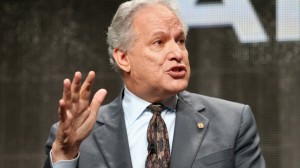With a record-setting death toll on U.S. roadways as a backdrop, the Obama administration committed to eliminating traffic fatalities within 30 years.
The promise is heavily reliant on the continued development of autonomous vehicles and complimentary smart-vehicle technologies.
Last year was the deadliest year on America’s highways and byways since 2008. It marked the continuation of a trend of rising fatality numbers after years of declines. The increase comes in spite of cars with more safety equipment than ever as well as unrelenting efforts to eliminate distracted driving.
Worse yet, nothing has changed in the first half of 2016, as deaths spiked 10.4% to 17,775, compared to a year earlier, according to preliminary NHTSA estimates.
(With autonomous rules, feds take next step toward revolution. For more, Click Here.)
“All this death and injury is avoidable,” said Transportation Deputy Secretary Victor Mendez. “We simply have to remain focused and not let up on this.”
In the interim, NHTSA, Federal Highway Administration, Federal Motor Carrier Safety Administration and National Safety Council are attempting to bring those numbers down.
As part of that, they’re partnering on the promotion of a safe driving through a campaign called Road to Zero, which will include marketing efforts and the installation of basic safety infrastructure such as rumble strips. The Transportation Department will spend $1 million annually for the next three years on grants.
However, that is only one part of the equation. NHTSA is plowing time and energy into finding ways to cut down the number of deaths in the near term. The leading causes are suspected to be distracted driving as well as the sheer number of people on the road.
(Click Here for details on the new guidelines.)
U.S. motorists have set records for miles traveled in each of the last two years, which is largely tied to low gas prices.
Federal officials have been pointing at zero deaths as the ultimate goal being achievable with self-driving vehicles being the lynchpin to the hitting that target.
“Reaching zero deaths will be difficult, will take time and will require significant effort from all of us but it is the only acceptable vision,” FHWA Deputy Administrator David Kim said in a statement.
(Death toll on U.S. roads continues to rise. For more, Click Here.)
“We’re not at zero yet, but by working together, the day will come when there are no fatalities on the nation’s roadways, sidewalks or bicycle paths.”


Improvements in safety technology and structural improvements have been offset by the enormous amount of power available to irresponsible drivers. Recently in New York City, where I live, a multi-car pileup involving a dump truck that couldn’t stop quick enough, resulted in several deaths from a predawn race competition on the Long Island Expressway. I see it all over the East Coast, as drivers of high-performance cars drive wrecklessly with seeming impunity. As an owner of two high-performance BMWs I’m not impugning the cars. But perhaps owning vehicles capable of such high speeds should require some sort of driver certification and driving school education. That would go much further than rumble strips and more passive safety add-one. It begins and ends with the driver, and sadly, in our country driving is not regulated nearly enough. Most American drivers appear oblivious to the most basic rules of the road.